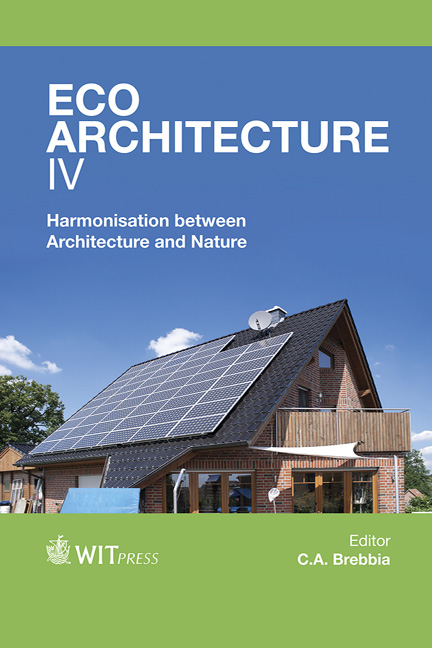Towards Near Zero Energy Dwellings By Heat Pump Implementation In HVAC Plants
Price
Free (open access)
Transaction
Volume
165
Pages
10
Page Range
289 - 298
Published
2013
Size
661 kb
Paper DOI
10.2495/ARC120261
Copyright
WIT Press
Author(s)
L. Schibuola, S. Martini, M. Scarpa & C. Tambani
Abstract
The EPBD (Energy Performances of Buildings Directive) updated on 9 July 2010 imposes new rules for energy savings in buildings. By 31 December 2020 all new buildings must be nearly Zero Energy Buildings (nZEB) with reference to the consumption of fossil fuels. The roadmap that each nation is adopting for this purpose imposes a further significant increase in the share of the building energy requirement covered by renewable energy. Achieving this goal at acceptable costs for the communities represents a real challenge considering the current state of the art. The role of Eco-Architecture will be fundamental in this phase of introduction and spread of innovative techniques in the design of building-plant system. For this aim, the installation of heat pumps for building heating is able to contribute significantly in terms of better energy performance and exploitation of renewable energy. In fact, in the EPBD the energy from heat sources of heat pumps (air, ground, water) is considered renewable energy. An assessment about the possibilities and limits of the electric heat pump installation in dwellings is here reported for different case studies and climates in Europe. Keywords: EPBD, nZEB, heat pump, dwelling, HVAC plants, renewable energy sources, CO2 reduction, SEER, energy efficiency, solar plants.
Keywords
EPBD, nZEB, heat pump, dwelling, HVAC plants, renewable energy sources, CO2 reduction, SEER, energy efficiency, solar plants





